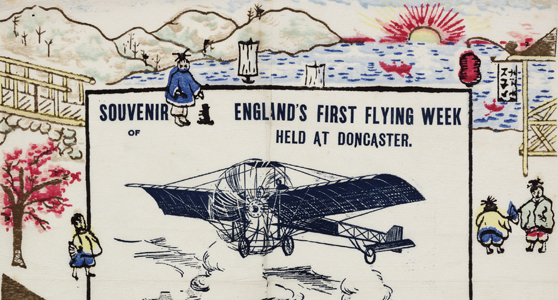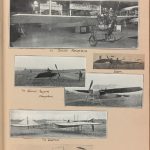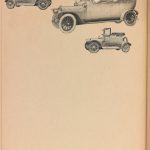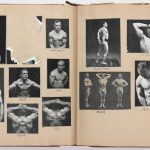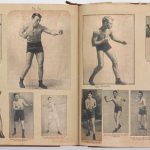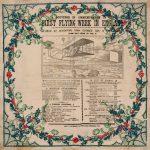‘½ vol. not relevant’: The scrapbook of Winifred Penn-Gaskell
Article DOI: https://dx.doi.org/10.15180/140210
Abstract
The scrapbook of Winifred Penn-Gaskell – celebrated aerophilatelist and collector of aeronautica –reveals a great deal about its maker and the social and political context of early flight history in Britain. It is argued here that a ‘reading’ of the book as a non-textual object offers a predictive argument for the aesthetic and cultural representation of heavier-than-air craft and pilots in the years immediately prior to the First World War. By viewing each section of the scrapbook as parts of a contingent whole, the early-twentieth century interest in performative masculinity (physical culture and boxing) becomes a part of the technological narrative of aviation development. In this paper I question the implications of branding an object such as this ‘irrelevant’ to the broader themes of the Penn-Gaskell collection, and offer some views of my own on how the notion of failure affects museological practices.
Keywords
aviation, collections, material culture, physical culture, scrapbooks
Introduction
https://dx.doi.org/10.15180/140210/002This article tells the story of a failed and forgotten object in the Science Museum. A thing, catalogued as part of a ‘miscellaneous collection’, with the note attached: ‘½ vol. not relevant.’ Formally, the object is one part of a collection of books on aeronautica, among the hundreds of items bequeathed by Miss Winifred Penn-Gaskell to the Science Museum on her death in 1949. More descriptively, it is a red, leather-bound album with rough, browning paper and the word ‘SCRAPS’ embossed in gold lettering on its spine. Inside is a selection of cuttings, classified into three types: early-twentieth century aircraft (see Figure 1); contemporary car models (see Figure 2); and pictures of nude and semi-nude male athletes (see Figure 3). It is a wonderful thing to uncover in the stores at Blythe House, especially as little is known of its former owner besides her spinster status, the address of her isolated cottage and her enthusiasm for aerophilately.

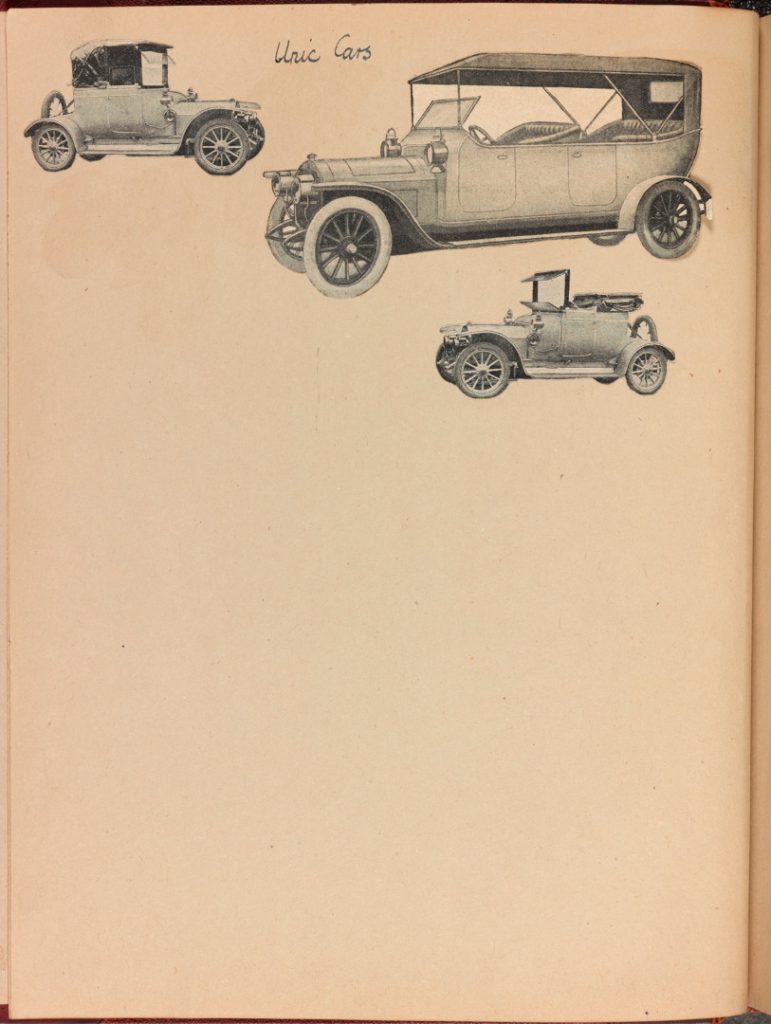

The Penn-Gaskell scrapbook is a rare moment of amateurism in the otherwise expertly curated collection of its owner. Scrapbooks themselves, as Ellen Gruber-Garvey has recently demonstrated, transcend the boundaries between mass print culture and personal taste in a way that makes each version a generically representative and yet unique object (Gruber-Garvey, 2012). Historians of such ephemera are tasked, simultaneously, with reading coherent contextual information from a (usually) non-textual object, and trying to resist biased confirmations of pre-conceived theses. In my study of the scrapbook I encountered my own bias in a desire to reanimate the figure of Winifred Penn-Gaskell, a woman representative of a number of maligned and intriguing figures in the history of folk art, museology, and aviation history.
Seeing the scrapbook for the first time brought on a moment of shock, as the juxtaposition between the anonymous and impersonal transport clippings with sexually-charged portraits of male bodybuilders fell out of the volume’s pages. It seemed, initially, to confirm my suspicion that there was a depth of imagination, creativity and desire to the woman I had previously encountered only through her dry personal correspondence with the Science Museum, and her collection of balloon-themed snuffboxes. It was the first ‘problem’ I had encountered in the archival work I had been engaged in on the Penn-Gaskell collection, and the challenge it posed was one of defining the collection. Aeroplanes held an obvious space in the history of the Penn-Gaskell collection within the Science Museum, and an interest in early-twentieth century automobiles seemed fairly contiguous with this, but where did the nude male athletes fit in? Understanding the scrapbook’s presence within the collections at the Science Museum is one thing, but how to grasp its significance for Penn-Gaskell herself? Moreover, what might this ephemeral object explain about the history of collecting, and the story of early-twentieth century transport technology in relation to the male body, that other, more significant objects already on gallery display in the Science Museum could not?
In the first issue of the Science Museum Group Journal (March 2014), Ben Russell outlined the successful integration of James Watt’s workshop into the Science Museum Energy Hall. Despite the apparent incongruity, Watt’s room of workbenches and the materials for his sculpture machine sit alongside the rotative steam engine in the museological narrative of British industrial history. The link between the everyday environment of an inventor and the results of his life’s work is invoked through the visitor’s assumed interest in the practices of this great man. Watt’s workshop, in this sense, is the historic antecedent of a thousand garden sheds, in which diligent tinkering enables eureka moments, changing the technological course of the world. In this paper, I hope to suggest that narratives of failure, of public disinterest and material irrelevancy can offer just as much to the historian of technology who investigates the curatorial practices of science museums as successful histories of men such as Watt. Failure, as Jack Halberstam points out, (Halberstam, 2011) is a behaviour and style adopted by those who cannot compete within the common market, those whose realities are seen as oppositional to and critical of a popular social narrative of success. This article will look at the Penn-Gaskell scrapbook, a single object that has been deemed a failure in its role within a wider collection, and ask what kind of knowledge can be gained from it. The questions driving this investigation are concerned with the broader treatment of insignificant objects within museums that demonstrate national, or global scientific progress, as well as the specific historic context in which the Penn-Gaskell scrapbook was made. What are the processes by which we attempt to ‘read’ an illegible object, about which little is known or cared?
Where Russell concludes that the placement of Watt’s workshop in the Science Museum should lead the visiting public to re-engage with a culture of making, doing and selling, I want to suggest that categories of maker, seller and buyer are not entirely clear-cut in the context of the Science Museum and its collections. Private collections donated to the Museum illustrate this generally, since distinctions between activities of making, selling and buying are compressed into linear histories of acquisition. The scrapbook of Penn-Gaskell is a case-in-point; the non-textual book, filled with photographs of different genres of models – from bloated airships to slender boxers – presents a series of problems to the historian of technology, and to those who study the collections of the Science Museum. In this study it will be necessary to resist interpretative limits which tell us there is one place for photographs of naked male bodies and a separate place for clippings of Blériot monoplanes. This argument for categorical fluidity will be applied to our investigation of the scrapbook itself, as well as to its history within and without of the Science Museum. It is in this way that I hope to show the museological value of the economically useless object.
The history of the Winifred Penn-Gaskell Collection of Aeronautica
https://dx.doi.org/10.15180/140210/003The Winifred Penn-Gaskell Collection of Aeronautica was bequeathed by its owner to the Science Museum in South Kensington and became a part of its collections following her death in November 1949. Penn-Gaskell had been in regular correspondence with the Keeper of Aeronautics, M J B Davy, for a period of ten years prior to this, after her original offer of a donation to the Victoria & Albert Museum had been declined and passed across Exhibition Road to the Science Museum. On the 24 April 1939, Davy visited Penn-Gaskell to view her collection and reported in a memo to the Museum director that he:
spent six hours at her house examining her collection of aeronautical prints, drawings, paintings, books, bric-a-brac, medals, china, etc. and also her unique series of ‘flown covers’ illustrating the development of air mail from 1870. There is no inventory of the collection (except books and pamphlets, of which we have a copy) and I gathered that Miss Penn-Gaskell does not intend to make one; she is continually adding to the collection.
Penn-Gaskell would continue to acquire new objects (primarily through London-based antiquarian dealers such as Maggs) until her death, and to store them in her remote Devonshire cottage during and after the Second World War. Davy writes that her collecting habit began in 1927, with the acquisition of the aerophilatelic materials – for which she would win prizes across Europe and America – and subsequently ‘extended to everything relevant to aeronautics’. Penn-Gaskell, he remarks, is ‘a collector by nature’ and the Senior Keeper was clearly impressed with the range of objects she had found and bought. His appreciation, however, for her intellectual engagement with the subject of early flight technology is less evident as he denies the likelihood of Penn-Gaskell having made any ‘deep study of the history of flight, or concerned herself at all with the technical aspect’. Colonel Henry Lyons, then-director of the Science Museum, would later write a thank-you letter to Penn-Gaskell for her donation of the ‘delightful collection’, noting ‘[it] will be a most welcome enhancement to the technical objects which we already possess’ (Lyons, 1939).
From the moment that Penn-Gaskell’s collection was offered to the Science Museum, then, it was treated as a decorative display of the social and cultural history of flight. This is an excusable and comprehensible interpretation of the ceramic and pottery items, the pastoral painting collection, as well as the ladies’ fans and gentlemen’s snuffboxes that Penn-Gaskell bequeathed. But these objects and paintings make up less than a third of the Penn-Gaskell collection – the rest being a prize-winning array of air-mail paraphernalia, stamps, and a huge collection of rare books on the subject of flight which span early-seventeenth century publications to classified Air Force engine blueprints from 1920. The historical, political and technical elements of flight history were clearly of great importance to Penn-Gaskell, and in this paper I will argue that signs of these interests are embodied within the pages of her scrapbook.
The Scrapbook
https://dx.doi.org/10.15180/140210/004The Winifred Penn-Gaskell scrapbook is a sporadically labelled volume. Bound in red leather, the covers of the book were clearly once grand though the quality of the paper inside is poor. Some sections of pages have been removed neatly along the spine, bringing the total contents to around 200 pages of which just over two thirds contain photographs. The sources for these images are difficult to determine individually, though some traces remain of their original publications – for instance, various monoplane clippings still bear captions from Flight magazine. There is an assumed relationship, across the sections of the scrapbook, between the names of bodies – human or mechanical – and their images. The single word ‘Daimler’ is given above a clipping of an automobile and ‘Thomas Inch’ has been written above a series of images showing a Caucasian man flexing his muscles for the photographer. In each case, a name and a photograph was all that was deemed necessary by Penn-Gaskell to conjure the import of the subject and its relationship to its neighbours in the volume.
In this manner, the scrapbook is remarkable for its juxtaposition of human and mechanical bodies. The wealth of scholarship on the subject of British modernism’s complicated relationship to technology and the human body makes the volume seem almost too paradigmatic – a perfect gift for the historian who wants to demonstrate the pervasiveness of technological humanism in the period. The scrapbook offers in itself an argument for the relation between developing theories of human biology, imperial power and technological determinism. By sandwiching muscular strongmen between emergent technologies of transport, Penn-Gaskell makes a predictive case for the visual representation of human flight, foreshadowing, in particular, the heroic image of the male fighter pilot during the second half of the First World War.
Dating the production of the scrapbook exactly is impossible. Like most objects of its kind, it was most likely assembled over the course of months, if not years, from cuttings taken from various publications. It is, however, possible to date the production and periods of popularity of the figures it contains. Doing so gives an approximate date range of 1909–11, making the scrapbook an item that pre-dates the supposed beginning of Penn-Gaskell’s collecting practices in 1927. Within the context of flight history and British popular culture, it is also important to stress that the scrapbook only contains references to figures and machines that were celebrated prior to the First World War, a time when there was no stable identity for the figure of the aeroplane pilot. Rather, a grouping of associations dominated the representation of flight technology, largely concerned with the daredevil nature of heavier-than-air flight.[1]
Pausing to reflect on its status as an object – a made thing, worth donating to and accepting by the Science Museum in 1949 as part of the collection – can offer insights into the history and personality of Winifred Penn-Gaskell herself. This illegible object reveals more information about the remarkable collector than incomplete census data and hunts for missing biographical information have yet to achieve.
The first section of cuttings, which number thirty seven pages featuring photographs taken from newspaper or magazine publications, are classified into subsection types of aircraft (monoplane, biplane or airship), and are identified by the names of their pilot-makers (Deperdussin, Blériot, Nieuport, Bristol and Cody to identify some of the most well-known). These models can all be dated to the period 1909–11, with the majority having been first flown at demonstrations in 1910. This is a period that the aviation historian C H Gibbs-Smith has referred to as a blossoming of spectacular flying displays, as rapid advances were made in speed and control of aircraft and a popular aviation culture developed in Western Europe and the United States (Gibbs-Smith, 1974).
Following the planes and a small section on dirigibles are three larger sections given over to photograph cuttings of physical culturists,[2] boxers and wrestlers. The physical culturists occupy the most space, and in some instances entire pages of cuttings are devoted to notable individuals, such as Thomas Inch and Edward Aston – strongmen rivals of the pre-war period. The boxers are smaller figures, both in print and physical stature and posed for action rather than as statuesque imitations of mythical heroes.

Their photographs appear to have been taken from cheaper publications as the quality of image and paper is worse than in the physical culturists’ pictures, and are occasionally accompanied by advertorial captions: ‘Sid Smith, flyweight champion of England, who is open to meet any lad at his weight and who wants business badly.’ Notable among the boxers’ photographs is an image of Dixie Kidd, an African-American lightweight boxer. The portrayal of complex intersections of race and class identity within boxing was, then, established enough to appear in this eclectic representation of the sport. The reputation of boxing in both Britain and America was that of a performance trade; a means by which those who were excluded from more conservative means of self-betterment were able to achieve a fleeting fame and acquire money – albeit at a great physical cost (Sugden, 1996).
The subsection devoted to ‘Wrestlers’ occupies only a single page and all the pasted photographs have been removed in a rough manner, leaving outlines in glue and paper marks. This act of erasure defies useful speculation, though it reinforces the impression that Penn-Gaskell made a separation between the three sports. Indeed, thinking about the differences between their practices and social histories in the early twentieth century aids modern attempts to distinguish between these overlapping cults of masculine strength.
Physical culture was a practice actively marketed at members of the lower-middle class in British urban centres, which appealed to jingoistic sensibilities and utilised early branches of eugenic thought. Its principal features were the encouragement of individual strength training through participation in both regional and national networks of fellow amateur athletes. Crucially, consumerism played a central role in physical culture, mainly through magazine subscriptions (which would offer to keep the reader informed in the latest strength training techniques) though also in the case of purchasing personalised training programmes from famous physical culturists, or branded weights for use at home. There was no financial reward to be drawn from participation in physical culture, only the personal and social satisfaction of dedicating one’s time to a fitness routine and developing a distinguished and fashionable set of muscles.
Boxing, though formalised by the end of the nineteenth century into a set of ‘Queensbury’ rules (which stipulated the need for gloves and timed bouts), still bore associations with subaltern cultures of pugilism and its chief figures were drawn from immigrant and working-class populations who were attempting to overcome their transient labour positions in industrial cities (Sugden, 1996).
Wrestling was an even more brutal sport than boxing, yet it was also more prone to elaborate staging rituals and rigged matches. It was perhaps the most blatant means by which men could capitalise on the strength of another subjugated male body. Fighters were often locked into formal and informal arrangements with their promoter-managers and there was no categorisation of wrestlers into different weights, which led to a dramatised struggle with moral significance, as physical might was pitched against more characterful performers (Sammond, 2005). Wrestling took the place of earlier forms of pugilistic boxing in representing an unarmed (de-tooled) struggle for survival, mimetic of the conditions of industrial labourers, as a form of entertainment. The structure of the scrapbook therefore mirrors a pattern of declining social respectability among the sports, with physical culture esteemed highly as a practice of self-refinement, and wrestling degraded as an exploitative spectacle. Embarrassment at her own interest in the déclassé world of wrestling and wrestlers could have led the wealthy Kensington-born Penn-Gaskell to remove the final group of male athletes from the scrapbook. This explanation remains unsatisfactory, however, as soon as one remembers that the subtitle ‘Wrestlers’, as well as the names of the athletes, remain legible in the scrapbook.
The final section of the scrapbook is devoted to motor cars of the period. Of the three main sections this is by far the least developed part of the scrapbook, usually with just one picture per page, as opposed to the filled margins preceding it. There are many potential reasons for this discrepancy, and again it seems unhelpful to speculate for too long on any single one. Perhaps Penn-Gaskell was simply less taken with pictures of earth-bound passenger vehicles than with giant dirigibles, elegant monoplanes and muscular nudes of male figures; in which case the scrapbook is evidence of the narrowing of her collection practices to a focus that would later settle on airmail and aeronautic history. Given Penn-Gaskell’s later exclusive collecting interest in flight history, this paper treats her scrapbook as an imaginative representation of early flight culture. It seems probable, however, that some of the conclusions drawn here in relation to the representation of aviation culture and history could potentially be extended to motoring culture by an author with more knowledge of this subject. Cars and aeroplanes have often been linked as paired technologies by historians of the early twentieth century, both offering an individualist alternative of mechanised transportation to the public rail network (Roseau et al., p 92). Aeroplanes and automobiles were both introduced to the consumer public via spectacles of speed and personal liberty. Watching the individual driver or pilot harness the might of increasingly powerful engines and perform for an enthusiastic crowd inevitably meant that public attention began to fixate on those behind the controls of this new breed of vehicles. Despite this, however, pilots and drivers and their vehicles began to merge into synchronised existences, the name of one often standing as synecdoche for the other.[3] Elsewhere in the Penn-Gaskell collection we can find evidence of her interest in recording the material culture of these events (see Figure 5), suggesting that they held an allure for her that was personal beyond the scope of her collecting practices.

In a brief mention of the scrapbook as part of a talk at the Postal Museum, Curator of Time, Navigation and Transport David Rooney has described it as ‘the perfect summary of [Penn-Gaskell’s] motivation for collecting’ (Rooney, 2012). Rooney argues that the collection was, for Penn-Gaskell a love-affair, an escapist world into which she could retreat inside the walls of her hilltop Devonshire cottage. The fantastical nature of the scrapbook as an imaginary tool for Penn-Gaskell is undeniable, but might her juxtaposition of strong male bodies with cars and aeroplanes have been something more than a handmade romantic stimulus? The cuttings that make up the volume were all taken from popular press publications of the time – either specialist magazines such as Flight, the print literature of the physical culture movement, or newspaper previews of boxing matches – and so the scrapbook is a reflection of a popular interest in new technology that was contemporary with a public fascination with (primarily white) male strength in the context of European imperial expansion.
The contents of Penn-Gaskell’s scrapbook mirror one of the most acute tensions of the scrapbook genre itself: the distinction between a mass-produced consumer item, and the personal representation of taste and interest. The drive to personalisation that has kept the market for souvenir photographs and scrapbook albums alive for decades is present in the scrapbook too: names of the inventors stand as metonymies for their machines. Read through as a text, the scrapbook is a nominal account: it appears as a list of names of the type usually found on a war memorial, or the birthday listings in The Times.
Though the arrangement of the cuttings in Penn-Gaskell’s scrapbook is neat and meticulous, the paper quality is poor, suggesting that this was not a high-value status object, but rather a personal indulgence. The tearing out of the wrestlers’ photos would suggest again that this was not an object for display in the home, as in the contemporary convention of scrapbook production. Penn-Gaskell also deviates from the standard notion of a scrapbook as a volume of self-constructed nostalgia. Her scrapbook is predictive, rather than reflective; it anticipates the melding of the human body – improved by scientific management, studies of fatigue, nutrition and biology – with the new machines of transport.
Melissa A Johnson has written of how ‘the convergence of the dissimilar to produce meaningful association was of revolutionary significance’ in other scrapbook collections of the time – the same is evidently true of Penn-Gaskell’s assembly of transport vehicles and male bodies (Tucker et al., 2006). In the Penn-Gaskell scrapbook, an incidental and ephemeral item, we can grasp for the first time at the motivations that drove the collector’s engagement with aerial technology and its history. In doing so, the horizons of public engagement with early flight and its material culture broaden substantially beyond those with access to ‘technical collections’.
‘SCRAPS’ of a broader context
https://dx.doi.org/10.15180/140210/005It is important, as with all items of ephemera, to situate Penn-Gaskell’s scrapbook within a broader historical context; in this case that context is one of ‘physical culture’ and interest in the health of a citizen body. Penn-Gaskell’s scrapbook offers a window on to this effort to create a statue-breed of new men, which began in the nineteenth century with concerns over the moral and physical degeneration of the British working population. The crisis provoked by recruitment for the Boer Wars only furthered the sense that the nation was wasting. A global influenza pandemic in the 1890s had heightened popular awareness of health concerns and the notion of preventative strength-building exercise for imperial subjects. British masculinity, and its public representation, was in need of a new regime by the end of the nineteenth century and this was swiftly provided for by the craze for ‘Physical Culture’ which has left its most enduring trace in the image of the 1900s strongman, clad in a colonist’s loin-cloth.
The scrapbook is not the first appearance of physical culture within the South Kensington museums’ collections. In 1901 a plaster cast of the body of the hugely popular weights lifter Eugen Sandow went on display under the Natural History curator’s direction. According to the curator, Professor Roy Lankester, Sandow’s cast was an illustration of ‘the perfect type of European man’ and it was hoped that the museum would one day have casts to represent ‘all human races’ (Budd, 1997, p 61).
Eugen Sandow had capitalised on his popular status through publishing a magazine devoted to his ‘method’. Sandow’s Magazine of Physical Culture ran from 1898 to 1904 – a remarkable success given the short-lived nature of other periodicals based on the same subject. Part of the magazine’s endurance is attributable to the self-branding act that Sandow carefully managed throughout his career. His magazine offered a subscription service through which readers could apply for personal training programmes, signed by the great strongman himself. The magazine also made use of two popular print formats: the short story based around colonial exploits (a triumphalist account of ‘White Man’s burden’, that had young British officers wrestle against members of indigenous populations and tigers indiscriminately); and opinion pieces which reinforced the moral worth of bodybuilding as part of a civilising mission one could perform on one’s own body. More metaphysical ideas of ‘muscular Christianity’ from earlier in the nineteenth century were in this manner literalised, through articles in the magazine with titles such as ‘Lawn Tennis as Social Reformer’, ‘Cycling as Physical Exercise for Clergymen’, ‘Physical Culture: its Influence on Morals’, ‘Strong Men of the Church’ and ‘A Limited Monarchy in the Jungle’.
Sandow’s Magazine also made heavy use of photography and is the first incarnation of a ‘pose’ tradition that still thrives in modern bodybuilding photography and competitions today. To pose was to imitate, in a fashion which drew attention to particularly well-developed areas of muscle, an idea of classical strength. It is important to stress that this was an interpretative and impressionistic means of invoking masculine figures of classical antiquity. The magazine asks us to view these male bodies as emblems of both Grecian athleticism (Athenian in their philosophical gaze, Spartan in their commitment to physicality) and Roman imperialism. However, there is no narrative context to any of the pictures, no inference of a great battle of wills and brawn between two opposing but matched cultures, or even of the existence of any other physical culturists. The photographs follow the same format every time: a static grimace showing one man’s physical triumph over the degenerative effects of modern life, and his inspirational ‘return’ to an ennobled nature.
The mode of portraying men as strong and yet immobilised used the development of photography in print journalism to simultaneously convey the reality of these bodies, as well as to imbue them with a distant glamour. The text of articles was often a step-by-step instruction manual on how to transform one’s own too-fleshy, too-animated and uncontrolled physicality into a colonial reworking of Michelangelo’s David. The inclusion of physical culturists, and clear quantitative preference for them over their fellow boxers and wrestlers can generate insight into Penn-Gaskell’s views and ambitions for aviation culture.
If the appearance of a bodybuilder in the galleries of natural history during a period of Edwardian repression over the naked body seems strange, we should also remember that the type XI monoplane in which Blériot made his pioneering crossing of the English Channel was first shown to the public in the atrium of Selfridges. Boundaries between commercial and scientific spectacle were more fluid than strictly taxonomic in the 1900s. This was particularly evident in the case of flight, which caused such mass wonder and represented a great technical human achievement. The pre-war attitude to flight, and its cast of individual pilots is often described as ‘sports-like’ as flight in the first decade of its invention tested the endurance of the pilot as much as it did the engines of the aircraft. In this case, links between early aviation and physical culture are fairly apparent, and the imperial weightlifter (and even boxer, who represented a type of hard-working labourer in popular imagination) was a prototype figure for the image of the archetypal new man: the pilot.
The figure of the physical culturist, on which Penn-Gaskell seems to have fixed in her imaginative prediction of the image of future flying men and automobile racers, was deeply involved in a racial and imperial politics of European strength. As Michael Budd has written, the unique appeal of the physical culture trend, which flourished between the late 1890s and the beginning of the First World War, was its entrepreneurs’ ability to utilise the mechanisms of consumer culture to sell a popular form of erotically-charged jingoism. Budd comments that:
… an enduring characteristic of the physical culture press… [was] its comparison-based consumerist dialogue and its own peculiar articulation of class and race as national and imperial properties in relation to bodily ideals.
(Ibid. p 62)
This involved drawing support from the eugenics movement and advocating in the physical culture press for the creation of a ‘National Eugenics’ post at the University of London – an achievement which informed Francis Galton’s views of the exercise regime (Ibid, pp 62–63). Physical culture, then, was implicated in a project to determine the future of the European male body through a dual commitment (which sometimes revealed itself as a tension) to genetic ‘purity’ and commercially-enabled self-improvement.
In her essay ‘Reading the Male Body’, Susan Bordo reminds us that ‘actual men are not timeless symbolic constructs; they are biologically, historically and experientially embodied beings’ (Bordo, 1997, p 32). Within the Penn-Gaskell scrapbook, the ‘actual men’ who do appear are doubly embodied within their historical context: firstly, as exemplars of the consumer interest in the development of male strength and the birth of the commercial health industry in Britain; secondly, as imaginary embodiments of a techno-human hybrid – a new type of human being whose biological power would become welded to that of machines, all in the cause of social and technological progress.[4] Comments by characters from fictional children’s book series which romanticised the figure of the pilot as both paternal influence and a form of self-projection for the reader echo this statement.
In one, a monoplane of the period is described as ‘a little light craft that was like a part of one’s self’ (Erisman, 1992, p 124). The plane (or car) in this way acted as a progressive prosthesis to the strong male body – adding to its biological ability (just as the owner of the body might have improved his strength via physical culture), rather than substituting for a lack in the original organic material. The appearance of this argument for pilot-plane hybridity in children’s fiction underlines a secondary aspect of the public representation of flight, that is, to de-emphasise risk. Early pilots needed to triumph against some adversity in order to achieve heroic status, but the progressive element of flight technology (in its media representation, at least) would ensure that the gains for humanity always outweighed the risks taken by individuals.
That the physical culture literature was marketed almost exclusively at men gives a strong argument for a homoerotic reading of the photographs. The ready availability of these images detracts somewhat from the thrill of discovering them nestled among biplanes and motorcars in the scrapbook, but we should not assume that their sexualised content was invisible to Penn-Gaskell, even as she pasted the bodies into their separate categories and pages. Alongside this history of desire and sexuality, the human body was also seen as ‘the basic raw material’ by influential thinkers and politicians during the period, as Geoffrey Searle has shown (Searle, 1971, p 60). The role of the human body to generate and maintain new social orders based around technological control had already gained political traction in Britain prior to the First World War.
The failure of photography
https://dx.doi.org/10.15180/140210/006One of the few things we know for certain about Winifred Penn-Gaskell is her strong distaste for the photographic medium. In a speech to the Aerophilatelic Society (circa 1933), she declared:
Photographs fade. A few volumes of “Flight” and similar magazines and a host of commercial picture postcards, (all honour to them) are all that remain to show the birth of the heavier than air machine. No great artist was inspired by these early planes and pilots…[which] have remained unhonoured and unpainted in the world of art.[5]
This scrapbook may not have fulfilled Winifred Penn-Gaskell’s desire for a ‘great art’ of flight that she could esteem personally. But it does show her long-standing investment in the representation of flight history as a politically important argument.[6] By juxtaposing images of aeroplanes, airships and motor cars with male bodies, Penn-Gaskell creates a visual plan for the representation of flight within popular culture. It is a reactionary vision, one which relies on conservative moral ideologies and the neoclassical styles which would be used by interwar Fascist movements, but it is an aesthetic creed nonetheless.
Returning to the objectives set out earlier in this paper, it is possible to use this single-object study to draw a series of conclusions relating both to the personal history of Winifred Penn-Gaskell and the pre-war popular culture of aviation. Firstly, the scrapbook emphasises the connections between early-aviation technology and sporting spectacle. The body of the pilot was tested during flight as strenuously as the body of the aeroplane. Importantly, Penn-Gaskell’s sectioning of scraps reminds us that this was a constructive process, drawing on the visual rhetoric of pre-existing cultures of masculine physical strength and multiple forms of emergent technologies (cars and airships were as much a part of this collage work as monoplanes and gliders). In this sense, Penn-Gaskell herself takes on the role and position of a ‘fan’, as well as that of a collector and antiquarian. This reading of the scrapbook provides us with a more dynamic image of the motivations for the world’s foremost aerophilatelist and reminds us of the role of play and enjoyment in the technical history of flight.
Secondly, the scrapbook complicates ideas of the categories of ‘maker, buyer, seller’ within histories of museum acquisition and collections.[7]Through its re-use and recycling of popular print culture and materials it creates a new and unique imaginative argument for the visual representation of human flight. Gruber-Garvey, in the first chapter of Writing with Scissors, emphasises the reinforcement of bourgeois taste values in scrapbooks as familial items: the givers’ values become embodied within the clippings (Gruber-Garvey, 2012). Yet in the few records we have of Winifred Penn-Gaskell, she appears a solitary figure. From childhood through to death she is recorded as alone – adopted as an only child by relatives in London, staying with married friends as a single woman on the night of the 1891 census, and living by herself in an isolated cottage in Widdecombe. So whilst it is evident that the scrapbook reflects much broader trends of the time (best represented by the French magazine La Vie au grand air which often mixed photo-essays on famous boxers with articles detailing new top motorcycling speeds) this generic aspect should not obscure its nature as a deeply personal and private item. Winifred Penn-Gaskell never appears in records as a receiver of gifts, but rather as a motivated acquirer of objects and it is this same individual determination that must have driven her production of the scrapbook.
The Penn-Gaskell scrapbook has been viewed in this paper as a non-textual argument for the establishment of a relationship between performative masculinity and futurist technology during the period of high modernism. But it is also a brilliant demonstration of the irreverence with which Penn-Gaskell treated her collecting subject. Though this collector had an eye for a well-decorated snuffbox, her objectifying gaze could be turned to a naked male athlete with just as much discernment and selectivity. If the irrelevance of half of her scrapbook to the rest of her collection is taken too seriously, a great loss would be suffered in the material evidence that links imperialist concerns for the body with modernist interests in technology.
Conclusion
https://dx.doi.org/10.15180/140210/007The early twentieth century obsession with the representation of pilots and their iconic status as figures of popular cultures – the first celebrities in the age of mass media – seems peculiarly dated now. Flight as an activity has been normalised into a civilian mode of transport. Yet the interest shown by Penn-Gaskell in prescribing the image of those who flew, drawing on modern mechanical inventions and neo-classical homoerotic representations of the body, lives on in the dress-up photoshop outside the Science Museum’s Flight Gallery (see Figures 6 & 7). It may not be deemed appropriate to pose nude and with flexed muscles here, as the bodybuilders of Penn-Gaskell’s imagination did, but visitors to the Flight Gallery are invited to wear the uniforms of different ages of aviation history and to purchase a picture of themselves inhabiting that role. Just as Penn-Gaskell’s scrapbook unites disparate themes of Edwardian technology, masculine self-presentation and commercial photography, the entrance to the Flight Gallery in South Kensington is now a place where a heroic (and bathetic) self-image can be purchased. Perhaps Penn-Gaskell’s visual combination of the display of the human body and the aesthetics of modernist technology was not as ridiculous as it may at first seem.
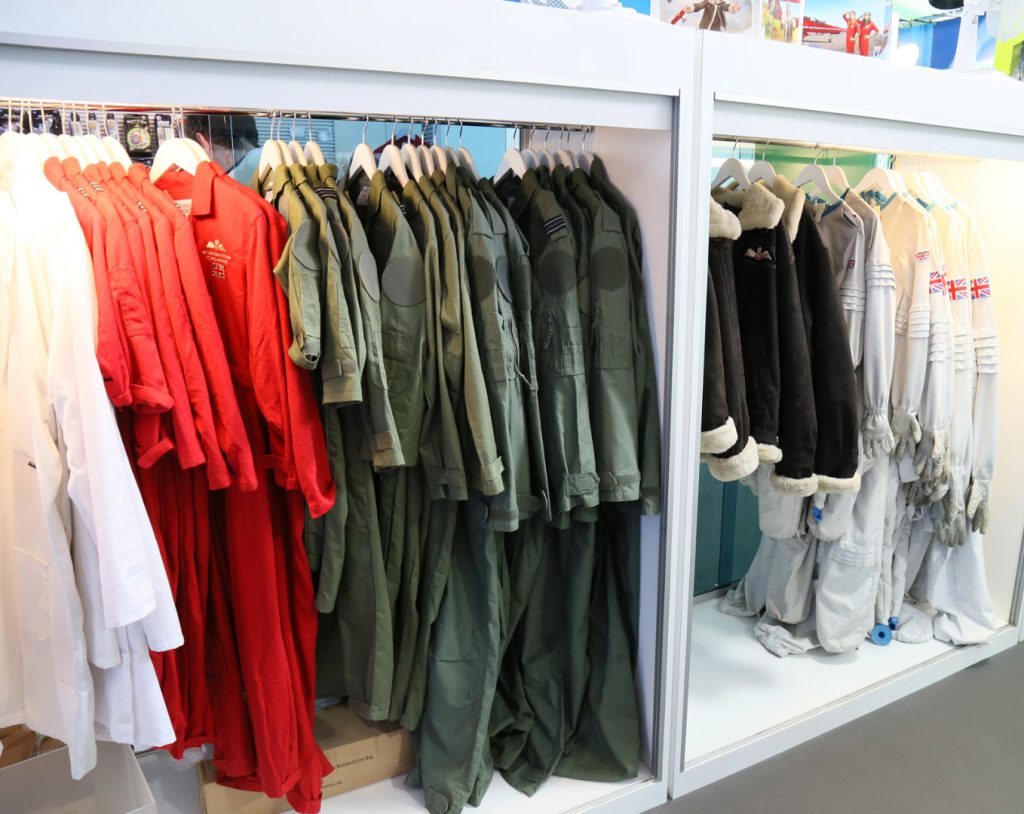

The political and historical significance of combining modern transportation technology and depictions of strong male bodies can help to contextualise the collecting practices of Winifred Penn-Gaskell, and refute the condescending and limiting views of her collection that were held by the first curators and keepers responsible for it at the Science Museum in South Kensington. Theories of collecting practices have often relied heavily on Freudian models of subject interpretation, but generalised applications of psychoanalysis to the histories of collectors are particularly reductive in the case of a woman about whom little but her marital status, birth and death dates are known. Conservative historical practices, inevitably, provide us with more information on the wealthy male collectors whose interests have so far been the subject of most investigation by historians than collectors who belonged to other social classes, genders or non-European backgrounds. In the absence of detailed historical records on the life of Winifred Penn-Gaskell, I believe it is important to refocus our attention on the political and historical environment which engendered her interest in flight memorabilia and aeronautica, as well as her more concealed parallel interest in the performative male body.As Krzystof Pomian has argued, introduction into a museum collection does not withdraw an object from economic circulation within the context of conservation and display:
… it is an undoubted paradox that objects which are kept temporarily or permanently out of the circuit of economic activity should even be so afforded the kind of special protection normally reserved for precious objects. The fact is that they are precious objects, yet they paradoxically have an exchange value and no practical or usage value.
(Pomian, 1990, p 10)
Penn-Gaskell’s scrapbook both demonstrates and complicates Pomian’s thesis. Kept in protective storage the item is accorded value beyond its financial worth, yet having been labelled irrelevant, the scrapbook is kept apart from the rest of the collection, which consists of items much more evidently ‘precious’.Clearly an economy of reasoning is at work in determining which objects are of high enough value to warrant preservation. Where the scrapbook is deemed marginal, albums of airmail stamps – not dissimilar in form to the scrapbook – occupy a prized position in the Penn-Gaskell stores. The Penn-Gaskell scrapbook, then, has been protected in part due to its proximity, and similarity, to more easily valued items of aeronautica.
Returning, by way of intra-journal conversation, to Ben Russell’s concluding statements in his paper on the Watt Workshop, I would add that the usefulness of making things is not so evident in cases which do not correspond to evident values of economic utility. The Penn-Gaskell collection was reactive to the history of flight, and has left no great technical legacy, but I do not believe that this has diminished its importance, or that it should be negatively compared to the ‘decorative items and objects of consumption’ accrued by a great scientific figure such as James Watt. Should we then look at collections as productions in their own right? If we do so, questions will necessarily arise over issues of their production and what conditions ought to apply to their ownership.
Russell concluded his study of Watt with the assertion that ‘the most important thing for the UK now is to get people out there, thinking, designing, making and selling tangible things’. The Penn-Gaskell collection teaches us a different lesson: it demonstrates the social limits of inclusion in a ‘things’ oriented culture – in which James Watt’s workshop is preserved as a place of Romantic genius infused with ‘Geist’, while Penn-Gaskell’s cottage store is used implicitly in records to devalue her skill as a collector. Here, it is not the impulse to creativity, but to reflexivity and critique which leaves such an interesting mark on its objects. Penn-Gaskell made something which is near impossible to sell. It is for cases such as these that we must develop alternate systems of evaluating objects which exist and are created outside of economic circulation when they enter the collections of science and technology museums.
In a disciplinary and capital-driven framework of successful invention and production, Penn-Gaskell’s scrapbook is a total failure. And that, I believe, is precisely why it is so interesting.
Acknowledgements
This research has been funded by an Arts and Humanities Research Council UK Collaborative Doctoral Award between the Science Museum and the University of Cambridge. My thanks go to Simon Schaffer, Boris Jardine, Patricia Fara, Andrew Nahum, Kate Steiner and my reviewers for their time and comments on various drafts.
Tags
Footnotes
Back to text
Back to text
Back to text
Back to text
Back to text
Back to text
Back to text

